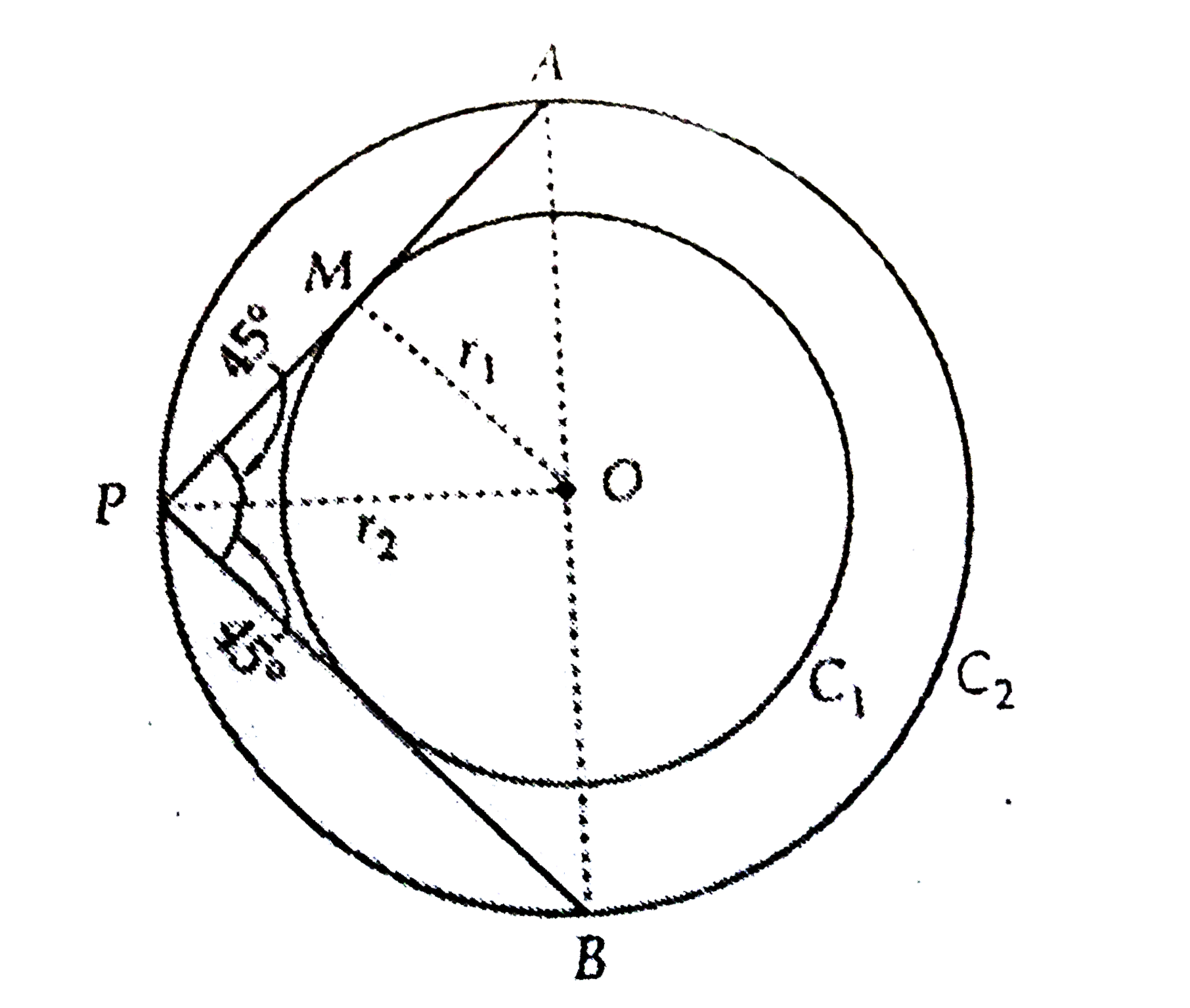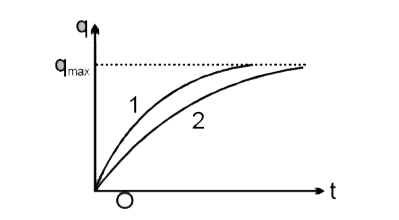C1andC2, are the two concentric circles withradii r1andr2,(r1<r2). If the tangents drawnfrom any point of C2, to C1, meet again C2, at theends of its diameter, then
r2=2r1
r2=√2r1
r22<2r21
none of these
The correct Answer is:B
In ΔOPM, we obtain
sin45∘=OMOP⇒1√2=r1r2⇒r2=√2r1

Topper's Solved these Questions
- BOOK - OBJECTIVE RD SHARMACHAPTER - CIRCLESEXERCISE - Section-I (Solved MCQs)1videos
CIRCLES
- BOOK - OBJECTIVE RD SHARMACHAPTER - CIRCLESEXERCISE - Section II - Assertion Reason Type12videos
CIRCLES
- BOOK - OBJECTIVE RD SHARMACHAPTER - CIRCLESEXERCISE - Chapter Test55videos
CIRCLES
- BOOK - OBJECTIVE RD SHARMACHAPTER - CARTESIAN PRODUCT OF SETS AND RELATIONS EXERCISE - Chapter Test31videos
CARTESIAN PRODUCT OF SETS AND RELATIONS
- BOOK - OBJECTIVE RD SHARMACHAPTER - COMPLEX NUMBERS EXERCISE - Chapter Test59videos
COMPLEX NUMBERS
Similar Questions
C1andC2, are the two concentric circles withradii r1andr2,(r1<r2). If the tangents drawnfrom any point of C2, to C1, meet again C2, at theends of its diameter, then
View SolutionC1andC2 are fixed circles of radii r1andr2 touches each other externally. Circle 'C' touches both Circles C1andC2 extemelly. If r1r2=32 then the eccentricity of the locus of centre of circles C is
View Solution
Knowledge Check
- Question 1 - Select One
Two Cars C1 and C2 are going round in concentric circles of radii R1 and R2. They complete the circular paths in the same time
Then SpeedofC1SpeedofC2=A1BR1/R2CR2/R1Dcan not be determined as data is insufficient - Question 2 - Select One
Two circles with centres at C1,C2 and having radii r1,r2 will intersect each in two real distinct points if , and only if :
Al(C1C2)<r1+r2Bl(C1C2)−|r1−r2|C|r1−r2|<l(C1C2)<r1+r2Dnone of these - Question 3 - Select One
Let R1andR2 be the radil of the circles with centres at C1andC2.
Statement 1: If C1C2≤r1+r2, then the two circles have two common tangents. Because
Statemetn 2: For two common tangents the two circles must intersect in two points.AStateme-1 is True, Statement-2 is True, Statemetn-2 is correct explanation for Statement-1BStatement-1 is True, Statement-2 is True, Statement-2 is NOT a correct explanation for Statement-1CStatement-1 is True, Statement-2 is FalseDStatement-1 is False, Statement-2 is ture
Consider a series of 'n' concentric circles C1,C2,C3,.....,Cn with radii r1,r2,r3,......,rn respectively, satisfying r1>r2>r3....>rnandr1=10. The circles are such that the chord of contact of tangents from any point on C1 to Ci+1 is a tangent to Ci+2(i=1,2,3,...). Find the value of limn→∞n∑i=1r1, if the angle between the tangents from any point of C1 to C2 is π3.
View SolutionLet C1 be the circle of radius 1 with center at the origin. Let C2 be the circle of radius r with center at the point A=(4,1), where 1<r<3. Two distinct common tangents PQandST of C1 and C2 are drawn. The tangent PQ touches C1 at P and C2 at Q. The tangent ST touches C1 at S and C2 at T. Mid points of the line segments PQandST are joined to form a line which meets the x -axis at a point B . If AB=√5 , then the value of r2 is
View Solution
Identify the correct statement (s) related to the R1R2,C1andC2 of the two RC circuitView SolutionLet n≥3 and let C1,C2,....,Cn, be circles with radii r1,r2,...rn, respectively. Assume that Ci and Ci+1 touch externally for 1≤i≤n−1. It is also given that the x-axis and the line y=2√2x+10 are tangential to each of the circle . Then r1,r2.rn are in (A) an arithmetic progression with common difference 3+√2 (B) a geometric progression with common ratio 3+√2 (C) an arithmetic progression with common difference 2+√3 (D) a geometric progression with common ratio 2+√3
View SolutionTransverse common tangents are drawn from O to the two circles C1,C2 with 4, 2 respectively. Then the ratio of the areas of triangles formed by the tangents drawn from O to the circles C1andC2 and chord of contacts of O w.r.t the circles C1andC2 respectively is
View Solution

